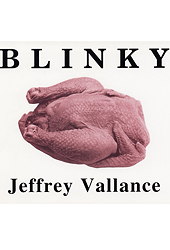Police and Other Law Enforcement
Bulletproof Clipboards
Ballistic Systems Co. sells bulletproof clipboards, starting at $40. They boast that they've sold "over 170,000 clipboards to law enforcement officers nationwide."While I'm sure the clipboards really are bulletproof, I'm skeptical about whether they'd be much help in preventing someone from getting shot. Wouldn't the force of a bullet simply knock the clipboard out of their hands?
Contrast this with the Clipboard Gun we've previously posted about.
via Book of Joe


Posted By: Alex - Wed May 29, 2024 -
Comments (1)
Category: Police and Other Law Enforcement, Weapons
Hampstead Beatnik Party
This clip (only static for a soundtrack) from British Pathe is labeled "Beatnik Party (1960) Hampstead." But is it the same party described in the article?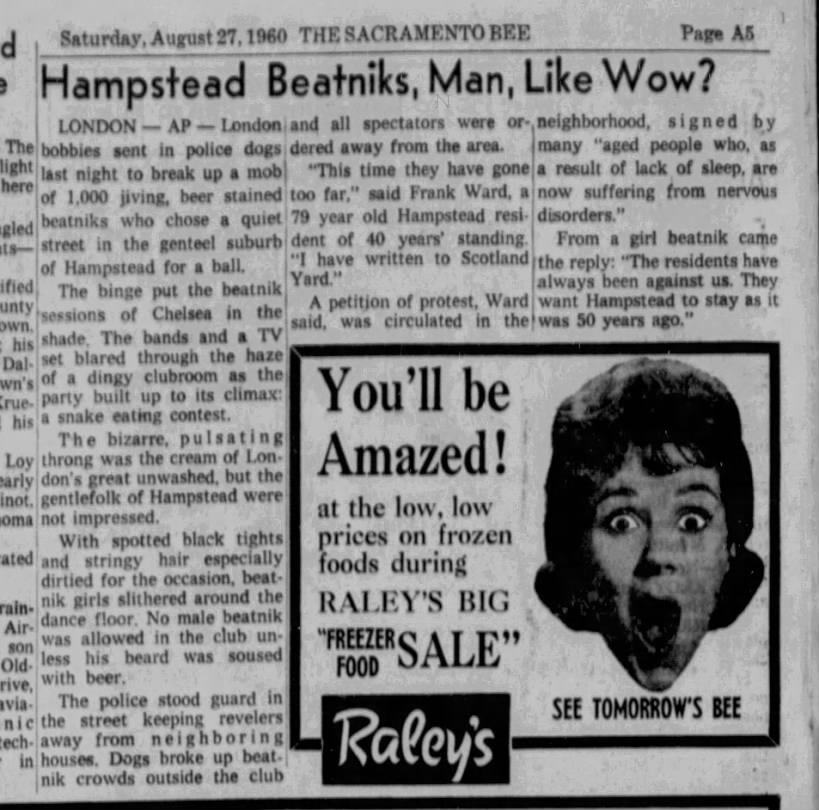
Posted By: Paul - Sun Apr 28, 2024 -
Comments (0)
Category: Dinners, Banquets, Parties, Tributes, Roasts and Other Celebrations, Police and Other Law Enforcement, Bohemians, Beatniks, Hippies and Slackers, 1960s, United Kingdom
The Armadillo Armored Suit
Apr 1958: Inventor Harvey Freeman looked a bit like a space alien in his "armadillo" armor, as Police Inspector Beryl Pace shot at him. The Detroit police bought four of Freeman's suits, but I have no idea if they were ever used.Freeman lived to be 100 years old, dying in 2022. You can read his obituary here.
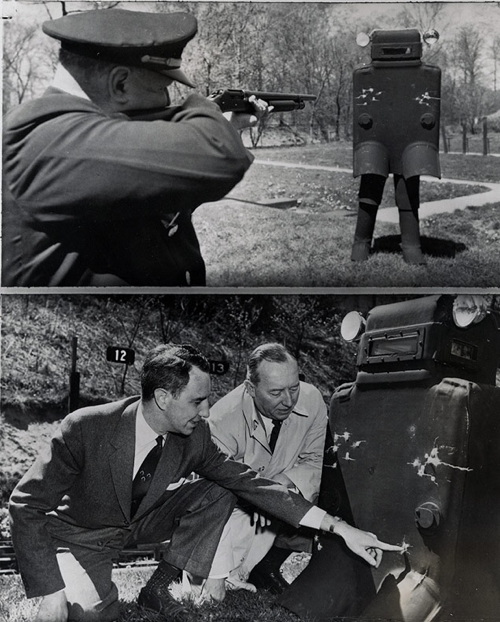
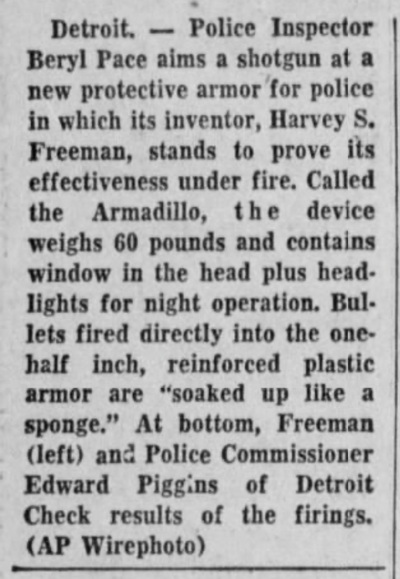
Santa Cruz Sentinel - Apr 30, 1958

Holland Evening Sentinel - Apr 30, 1958 (click to enlarge)
Below is what appears to be an early version of Freeman's suit.
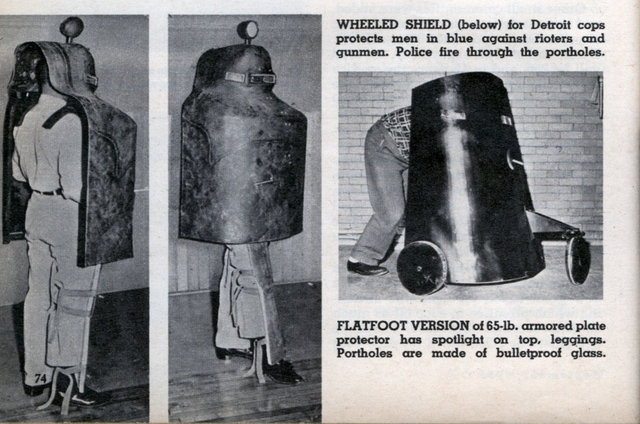
Mechanix Illustrated - Sep 1956
Posted By: Alex - Thu Jan 25, 2024 -
Comments (0)
Category: Inventions, Police and Other Law Enforcement, 1950s
Trick or Treat! It’s the Police!
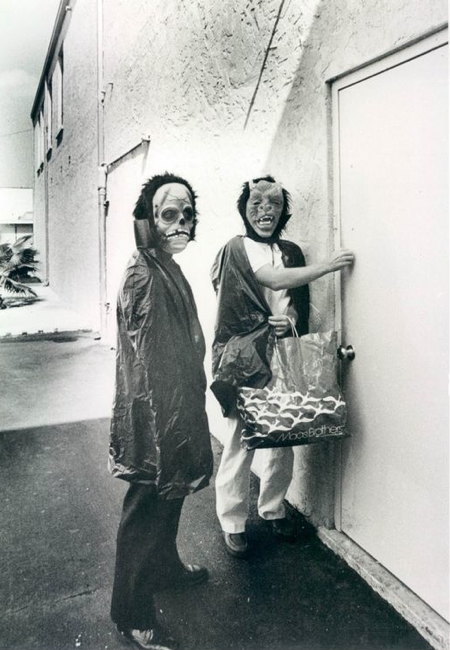
"Detectives John Simpson and Curtis McFee model their monster and a devil costumes."

Tampa Bay Times - Nov 2, 1985
Posted By: Alex - Tue Oct 31, 2023 -
Comments (2)
Category: Police and Other Law Enforcement, 1980s, Halloween
Unreasonable suspicion
Does a police officer have the right to search your car if you don't laugh when he asks you if you have any "firearms, drugs, cats, dogs, alligators, and weapons" in your car? The court said no.United States v. Holloway, 2023 U.S. Dist. LEXIS 187752 (E.D. Pa. Oct. 18, 2023):
While courts "do give considerable deference to police officers' determinations of reasonable suspicion, … courts do not owe them blind deference." United States v. Alvin, 701 F. App'x 151, 156 (3d Cir. 2017) (internal quotations omitted). The Court does not find that laughing at a law enforcement officer while being questioned about drugs and weapons would be an appropriate response. Moreover, failing to laugh at a bizarre question while being questioned about drugs and weapons does not create reasonable suspicion to remove an individual from a car after a traffic violation.
via Fourth Amendment.com
Posted By: Alex - Thu Oct 26, 2023 -
Comments (1)
Category: Law, Police and Other Law Enforcement
The Hobo Jungle Murder
You might or might not be surprised at the number of hits one gets when searching for "hobo murder." I guess that milieu was a really violent one. In any case, I highlight this instance for the great hobo names. I assume "Knubbs" meant "nubs," referring to the dead man's lack of hands.What would your own hobo name be, by the way?

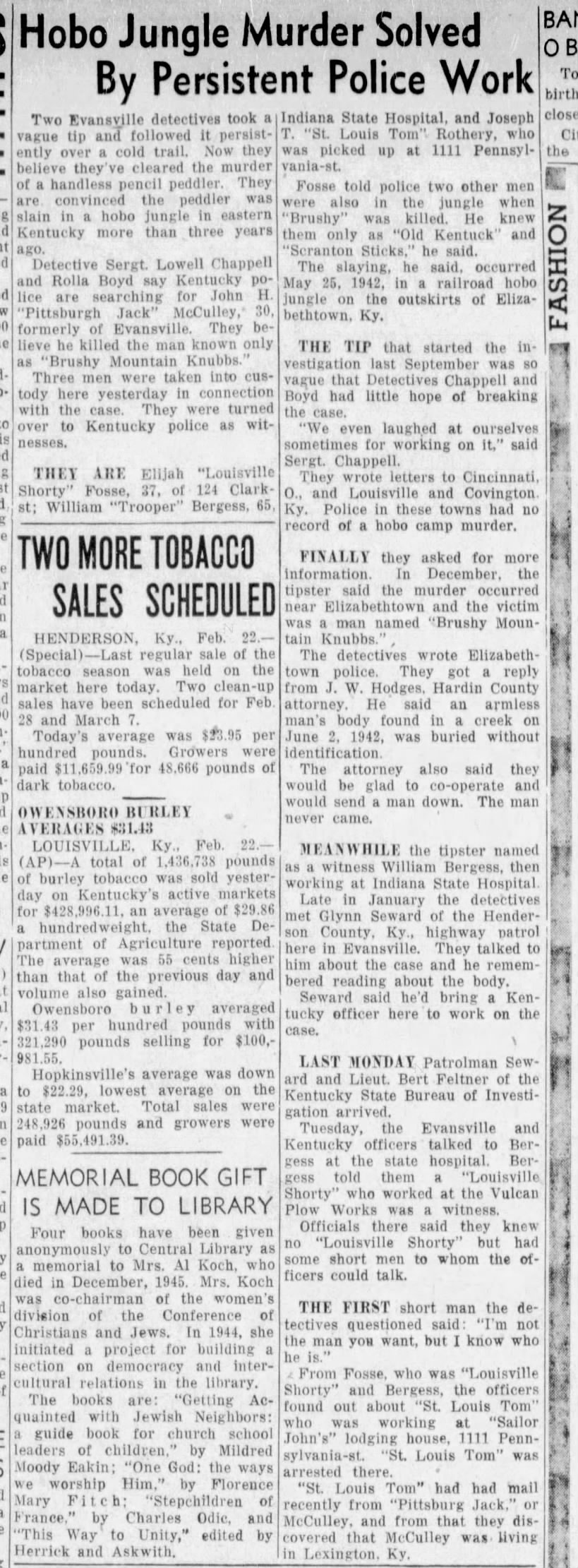
Posted By: Paul - Tue Sep 26, 2023 -
Comments (0)
Category: Bums, Hobos, Tramps, Beggars, Panhandlers and Other Streetpeople, Death, Odd Names, Police and Other Law Enforcement, 1940s
Clipboard Gun
The justification for this clipboard gun was that it would allow police officers to approach stopped vehicles looking as if they were holding a clipboard, not a gun.The problem that I see is that it wouldn't take long for the public to realize that the clipboards were actually guns. In which case, even if a police officer was genuinely only carrying a clipboard, everyone would assume it was a gun.
More info: Patent No. 4,016,666

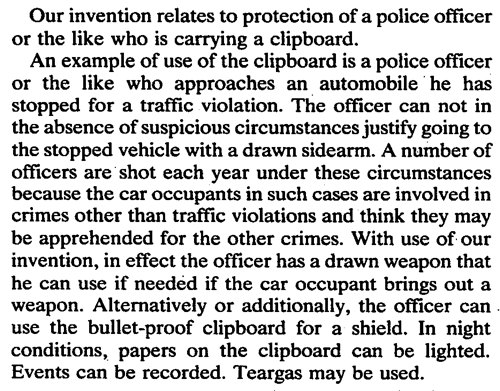
Posted By: Alex - Tue Aug 29, 2023 -
Comments (2)
Category: Police and Other Law Enforcement, Patents, 1970s, Weapons
Always on Call
Posted By: Paul - Sat Jul 15, 2023 -
Comments (0)
Category: Police and Other Law Enforcement, PSA’s, Social Services, 1950s
Auto Breathalyzer Disguise
Might a felon be embarrassed to be seen blowing into his automobile ignition interlock Breathalyzer? Yes! Then what you need is this camouflage unit!The patent is here.

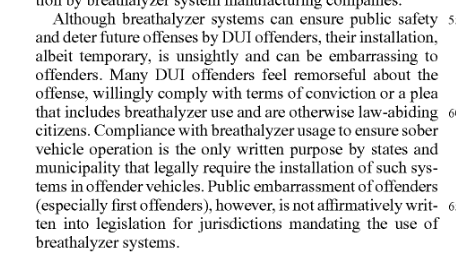


Posted By: Paul - Tue Jul 11, 2023 -
Comments (0)
Category: Disguises, Impersonations, Mimics and Forgeries, Inventions, Police and Other Law Enforcement, Alcohol, Cars
Unauthorized Dwellings 28


Posted By: Paul - Tue Feb 21, 2023 -
Comments (1)
Category: Police and Other Law Enforcement, Unauthorized Dwellings, 1980s, Europe

| Who We Are |
|---|
| Alex Boese Alex is the creator and curator of the Museum of Hoaxes. He's also the author of various weird, non-fiction, science-themed books such as Elephants on Acid and Psychedelic Apes. Paul Di Filippo Paul has been paid to put weird ideas into fictional form for over thirty years, in his career as a noted science fiction writer. He has recently begun blogging on many curious topics with three fellow writers at The Inferior 4+1. Contact Us |

